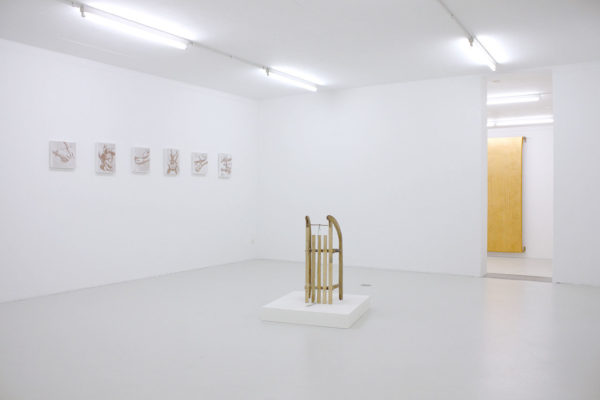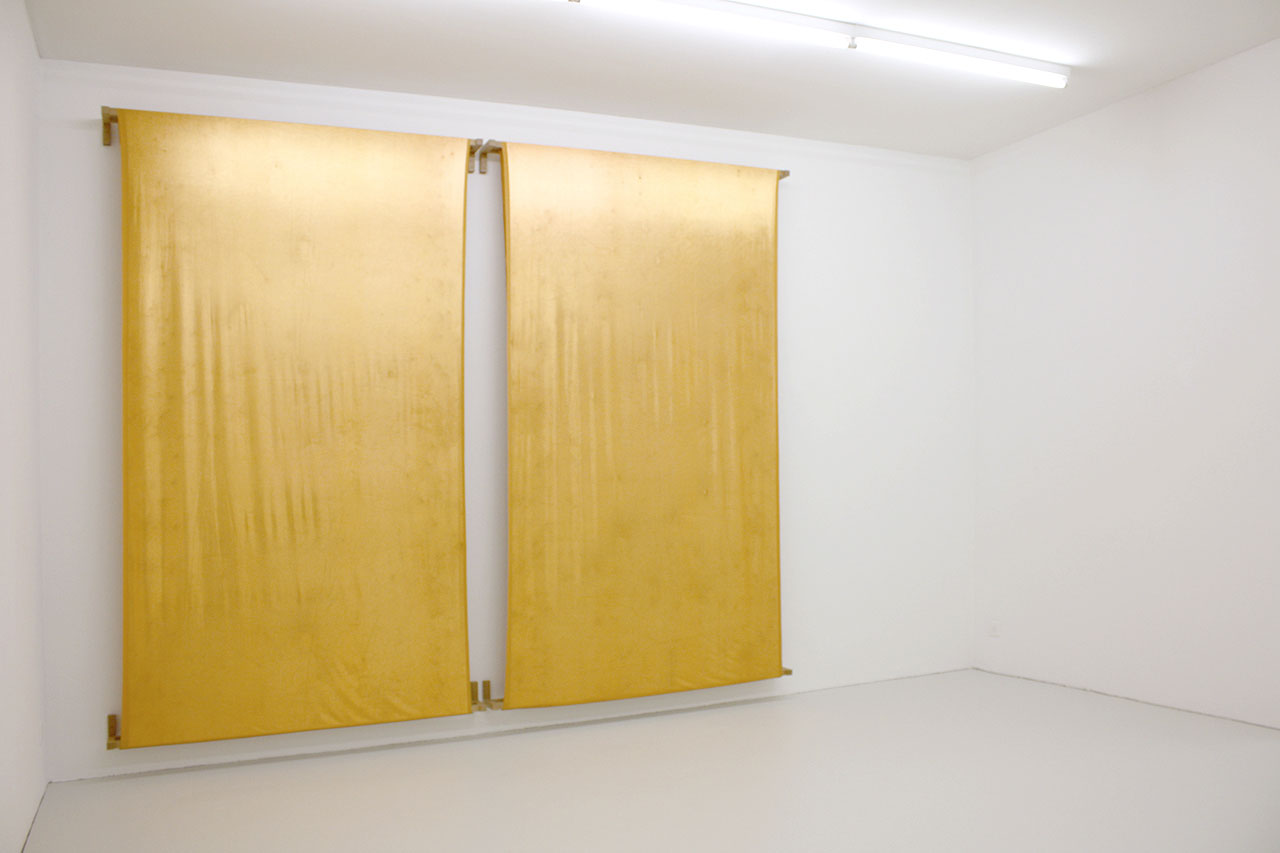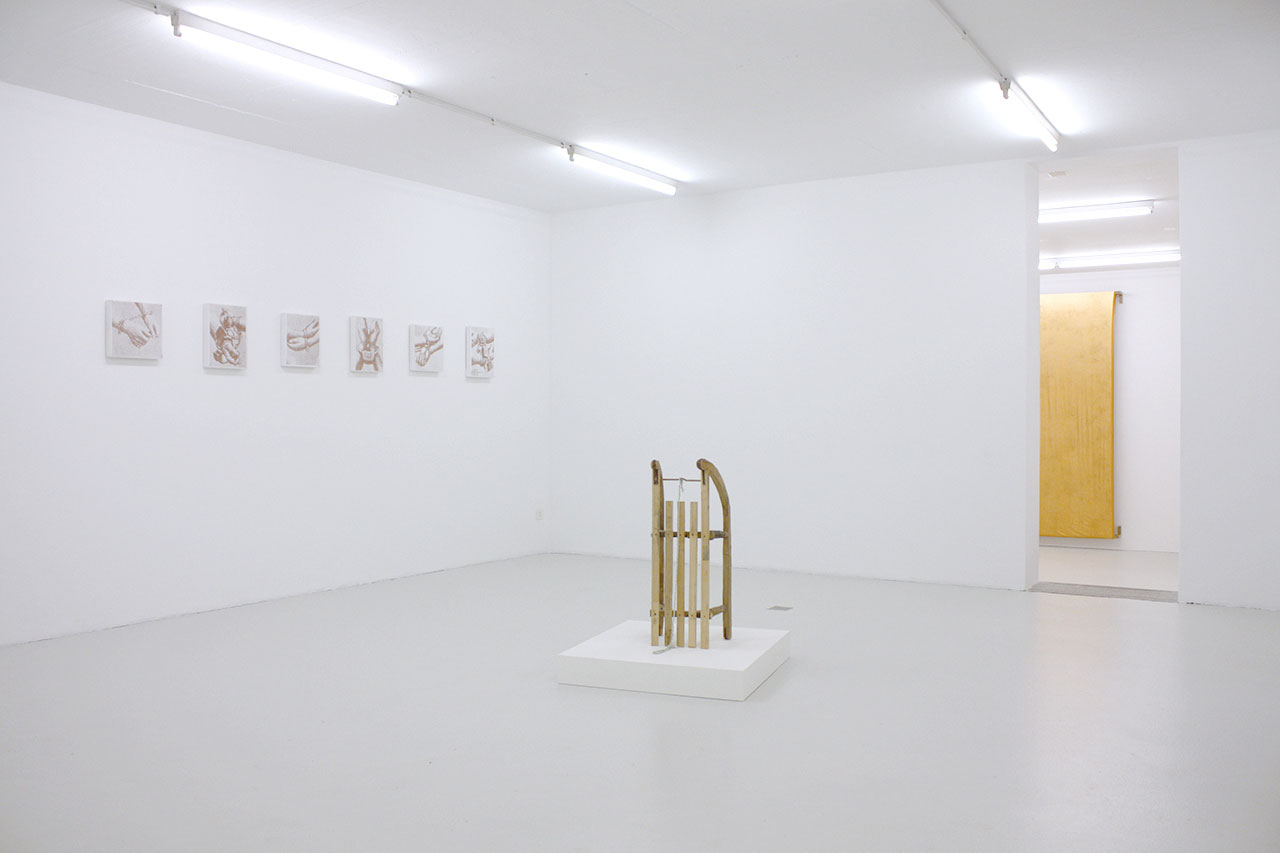Behind the Glass
Donato Amstutz / René Odermatt
23 April – 3 July 2016
BEHIND THE GLASS is the second exhibition for the year 2016, presenting two apparently different artists – Amstutz and Odermatt – who nevertheless share a strong bond in their approach to material and its transformation.
The exhibition opens (on Friday 22 April 2016) to coincide with DIMENSIONE DISEGNO. POSIZIONI CONTEMPORANEE (The Dimension of Drawing: Contemporary Positions), an exhibition curated by Carole Haensler Huguet to be hosted at the Civic Museum of Villa dei Cedri in Bellinzona.
DONATO AMSTUTZ (1969), who among other things has already held a one-man show at the MACT/CACT in 2011, featuring the publication of the monograph APATHIA, is something of a painter of embroidery, in the sense that he balances skilfully on the knife-edge between traditional and contemporary, between acceleration and the cancellation of the – utterly technological – rapport between space and time and recuperation of how time itself passes, which turns out to be an essential element for defining his work and approaching how he constructs his imagery. Embroidery done by hand, involving the inescapable slowness of its execution, induces us to ponder and question an era – our own – when everything else is so strongly identified and marked by rapid technologies, all the apparatus of information and communication and the concepts of efficiency and optimisation: all traits that were such vigorous hallmarks of artistic production in the latter part of the last century, leading up to the paired conceptions of art/technology and art/science. So it’s as though Donato Amstutz were to be recuperating the archaeological artefacts of a ‘modern’ photocopier, the object that we have now almost completely replaced with the scanner for transmitting data online, so as to preserve them in his archives of ‘products’ that nobody looks at any more: consumer durables that have come to be appreciated for their aesthetics; images that are there to console us, like so many images these days. Amstutz thrives on these photos and figures: he selects them and reproduces them, embroidering them by hand on fabric.
It is actually this act of slowly rewriting an image, almost what might be termed a ‘stupidogram’ on the scale of craftsmanship, whose execution is long and drawn-out, with repetitive gestures, that restores the meaning of seeing to the arrogance of looking. The point of embroidering reproductions of everyday information images whose ultimate destiny is usually to be pulped, after multiple machine reproductions and maybe also alterations, is to acquire the ability of sublimation and restoration to representation of its centre of gravity, its iconological and iconographic importance, shifting the conceptual experience once again towards the visual. It is ironic just how intelligent is his way of analysing and examining the process of constructing and deconstructing visual language in relation to an era distinguished fundamentally by choral, fashionista inhibition, where everyone strives so hard to be different that they all end up identical.
In parallel, RENÉ ODERMATT (1972) makes matter and his material into the constituent element of his work: wood, with the occasional variant. His sheer craftsmanship – which cannot be described as ‘art for art’s sake’ – frustrates the excess of à la mode and/or à la carte stereotypes we find all too often in the art market. All things contemporary are coming under the heavy fire of sustained attack from evolutionism, as the post-contemporary advances, dragging a greater awareness of past history with it. Odermatt works on and with that history, conceiving of iconology linguistically. Like Amstutz, he, too, practices skilled craftsmanship, whence the public has come to expect the authenticity of the gesture, rather as though he were recuperating a long-lost quality: maybe this is the new meaning to be given to the concept of the contemporary, a process of bringing the human element back within the bounds of the conjectures of a universe that is possible, but all primarily virtual and virtually social. These influences are described egregiously by Odermatt, who approaches his classical wooden sculpture in such a way as to question – ironically, of course – the logos of stereotyped imagery. It is actually his technical skill that hits the mark, enabling him to use other materials to reproduce ‘pop’-flavoured clichés, often unmasking the commonplace and self-reference.
Mario Casanova, 2016 (translation by Pete Kercher)
Cover images: Donato Amstutz (1969) & René Odermatt (1972). Käfer (Beetle), 2016 (detail). Walnut wood, fabrics, beech wood;
(from left to right) Donato Amstutz (1969), Ohne Titel (Entfesselt) (Untitled (unleashed)), 2005. Embroidery with copper wire. Collection Nidwaldner Museum Stans.
Donato Amstutz (1969) & René Odermatt (1972), Holzschlitten mit Kordel (Wooden sled with rope), 2015. Wood, cotton.
Ph. Pier Giorgio De Pinto © PRO LITTERIS Zürich.
Where
MACT/CACT
Museo e Centro d’Arte Contemporanea Ticino
Via Tamaro 3, Bellinzona.
Opening hours
Friday, Saturday, Sunday
2 p.m. – 6 p.m.




